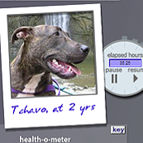Mapping Tool
 Using maps as a way of organizing information makes perfect sense for certain types of courses. What was amazing about this project, was once we developed the tool, to learn just how many different types of projects could use mapping. We started with a project that allowed engineering students and social scientists to share data about the Cayuga Lake Watershed. Shortly thereafter, students studying the history of Hip Hop started using the map as did international agriculture alumni who wanted to share their stories from around the world. Hundreds of students have shared their personal stories about their school experiences on a map. We even use the map tool in our own group to show at which computing labs specific sofware can be found. I was the project manager and instructional designer for this project.
Using maps as a way of organizing information makes perfect sense for certain types of courses. What was amazing about this project, was once we developed the tool, to learn just how many different types of projects could use mapping. We started with a project that allowed engineering students and social scientists to share data about the Cayuga Lake Watershed. Shortly thereafter, students studying the history of Hip Hop started using the map as did international agriculture alumni who wanted to share their stories from around the world. Hundreds of students have shared their personal stories about their school experiences on a map. We even use the map tool in our own group to show at which computing labs specific sofware can be found. I was the project manager and instructional designer for this project.
Most of the maps are publicly available.


